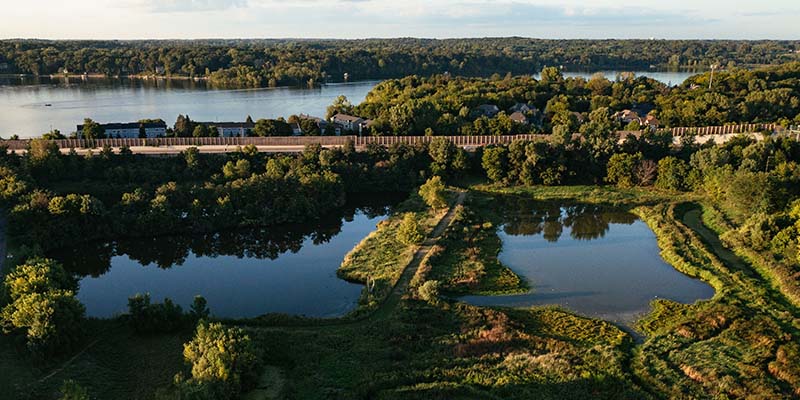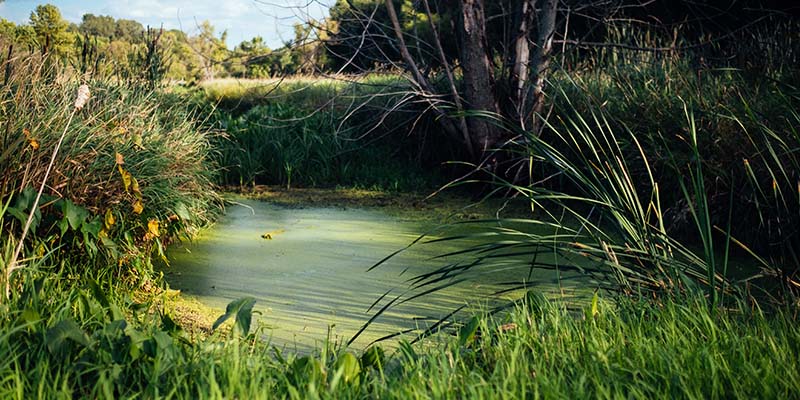
Wetlands function as natural sponges that trap and slowly release surface water, rain, snowmelt, groundwater and flood waters. They also provide a habitat for birds and other wildlife, and support healthy fish populations. In fact, 43% of the threatened and endangered species on federal lists rely directly or indirectly on wetlands for their survival.
They provide many benefits, and are very important parts of our natural systems because they:
- Provide clean water by filtering out and storing many pollutants, especially phosphorus
- Prevent flood damage by storing water during rain events
- Control erosion by slowing the flow of water
- Provide economic benefits
- Offer a beautiful landscape and are wonderful places for recreation and family activities
When working near wetlands or planning to build near a wetland, it is important to minimize the impact of development as much as possible. In many cases it is advisable to avoid building on or near a wetland entirely.

Wetland Buffers
One of the most effective ways to protect a wetland is to establish and maintain a natural buffer area around it. A wetland buffer is an un-mowed and naturally vegetated area adjacent to a wetland that protects the wetland from the effects of nearby development.
- Buffers can be used to link wetlands, providing a connection for wildlife to move safely from one habitat to another.
- They reduce polluted runoff from entering wetlands and help keep wetlands healthy.
It is critical to provide an adequate wetland buffer. Generally, the appropriate width of a wetland buffer is based on several variables, but the bottom line is buffer effectiveness increases with buffer width.
Do I Have Wetland Buffers on My Property?
Many types of wetlands are protected by law, and require a buffer. If your property is located within the watershed district and there is a wetland on your land, you may have protected wetland buffers on your land. If you are doing construction on your property and have protected wetland buffers, you may need a permit. Visit our permitting page to learn more.
For more information:
- Learn more about wetland plants from MCWD’s guidelines for acceptable wetland buffer plants (PDF)
- See a report on Benefits of Wetland Buffers: A Study of Functions, Values and Size (PDF) prepared for MCWD by Emmons and Olivier Resources, Inc.
- Visit the NRCS website to learn more
